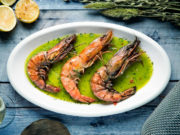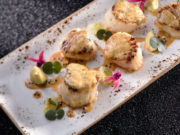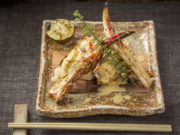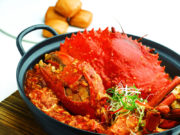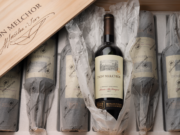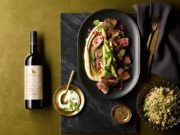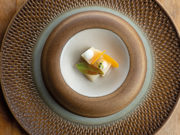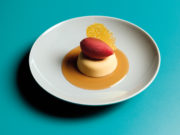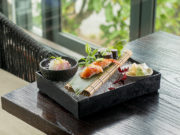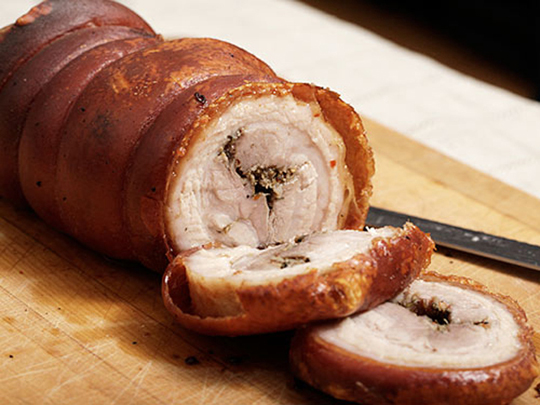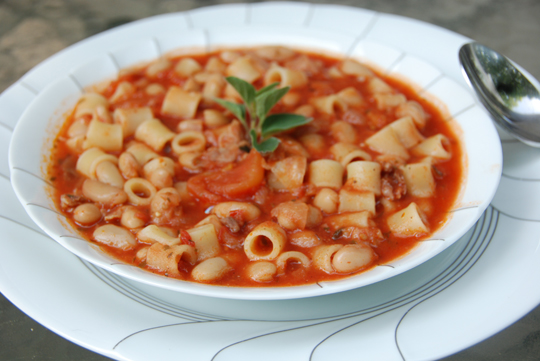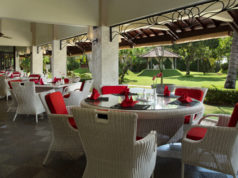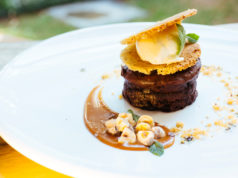Visitors to ltalia may be surprised to find such a huge diversity of cuisine travelling from region to region. And truth be told, there is no such thing as “Italian cuisine,” rather, Italy is made up of many distinct cuisines, each with its own particular flavour palate, recipes, ingredients and preferred cooking techniques, used down the generations which can vary from village to village and, each region and sub region has its own typical food and recipes.
Some dishes are prepared only in certain cities, like the braised goat of Campi (from Tuscany) or the figure eight-shaped pasta, corzetti of Valpolcevera (Liguria), while the same dish can be made in vastly different ways throughout the country. The result is a huge number of local cuisines as opposed to a single national cuisine. In fact, only a few dishes are considered ‘national’.
The richness of Italian cuisine lies in its diversity, the result of several contributing factors; before Italy’s reunification in 1861, Italy was actually made-up of independent city states, republics and regions and each of their unique histories have left their distinct mark on the regional cuisines. Due to its position in the centre of the Mediterranean, all the many nations that have inhabited Italy, including Arabs, French and Spanish have influenced regional cuisines. Cooking preferences are also shaped by geographical and climatic differences: naturally, food will vary from the northern alpine regions to the sun-drenched Mediterranean islands in the south.
Which explains why even the classic Italian staples are prepared in slightly different variations across the country; classics that have originated from somewhere in Italy, such as pizza and gnocchi, show considerable variation in recipes and names across different regions. Generally speaking, pasta has for centuries been an integral part of Italy’s food history and the quintessential Italian dish for much of the Italian peninsula.
However even pasta has more regional differences than you think, with an incredible number of variations of dishes. Overall, dried pasta, made from hard wheat, is generally found to the south, whereas fresh pasta, made with soft flour and eggs, is more popular in northern Italian regional cooking, while dishes can range from delicate tortilla filled with squash in Lombardy to spaghetti tossed with salted gray mullet roe in Sardinia—not to mention an amazing range of forms, shapes and sizes of pastas—many, unique to specific regions. Furthermore, even though pasta is eaten everywhere, the pasta obsession can be far more prevalent in some regions than others.
Overall, it is acknowledged that there are around 20 distinct culinary sub-regions with unique dietary preferences, cuisine characteristics and local recipes, which have organically developed down the centuries. Even with these regional specialties, it is then possible to find some common cooking trends that break Italy down into three distinct gastronomic areas, coinciding with the geographical division of the country—the north, centre and south
Italian Regional Specialities:
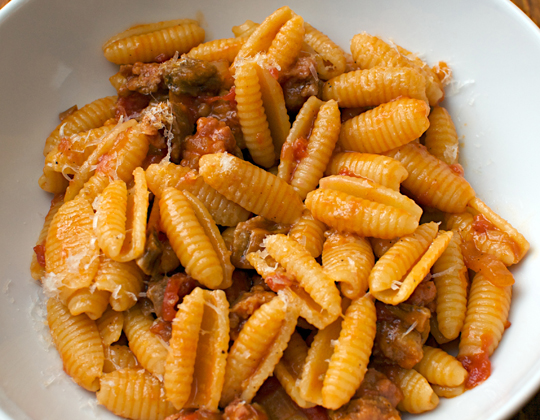
Northern Italy
Although there are exceptions, northern Italian cuisine is generally characterized by less use of olive oil and a heavier reliance on butter or lard and cheeses for cream sauces. There is also less pasta consumed and more rice and corn –there are areas in northern Italy where rice and corn, especially polenta, a mushy corn dish served in innumerable ways are the staple starches here rather than pasta. Surprisingly, there are many rice fields in this region; the most famous northern rice dish (known the world over) is risotto, braised in a broth derived from meat, fish, or vegetables, with butter, wine and cheese, stirred to a divine creamy consistency. Risotto alla Milanese, from Milan in the Lombardia region, is a well-known and deliciously rich dish coloured with saffron.
Gastronomic traditions also revolve around hot soups, like hearty minestrone, a thick soup of diced vegetables, often with the addition of pasta or rice and dishes with game or wild fowl such as rabbit, quail or grouse. The north is also the home of the celebrated osso buco, a traditional main course of veal knuckle—with the marrowbone intact—braised with rosemary and sage.
World-famous pesto sauce, originates from Genoa in the Liguria region (located along the Mediterranean coast by the French border), this beloved sauce and culinary masterpiece is traditionally made with fresh basil, crushed garlic and European pine nuts blended with olive oil, Parmigiano-Reggiano (Parmesan cheese), and fiore sardo (sheep’s milk cheese). Pesto is usually married with pasta dishes, the most well-known, fettuccine with pesto alla Genovese. The north’s Piemonte region is also home to much-prized porcini mushrooms and white truffles.
Central Italy
Much of what the rest of the world considers as “Italian” food originates mainly from the central regions of Italy: velvety smooth olive oils, world-famous cheeses, savoury cured meats and rich tomato sauces. The idyllic region of Tuscany especially produces excellent olive oils, sheep’s milk cheeses and delicious roasted meat dishes. The centre of Italy is also famed for its truffles and mushrooms, especially in the Umbria region, where you’re likely to find Italy’s finest black truffles (Tartufo Nero), which end-up served with practically everything, including the famous Umbrian dish of fresh tagliatelle with truffles, and strozzapreti pasta in a decadent black truffle sauce—not easily available outside this region. The hills of Tuscany and Umbria are blessed with a large wild boar population and thus a consequent array of wild boar recipes.
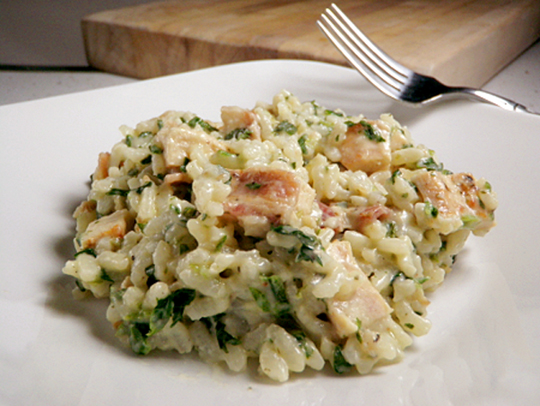
The centre of Italy is renowned for its heavy-bodied food and exceptional fresh home-made pastas, but it is the region of Emilia-Romagna which has the fiercest reputation; here stuffed fresh pastas, including tortellini of Emilia and cappelletti of Romagna, often served with the region’s famous ragù sauce, are among the staple dishes of this area. In fact, Emilia-Romagna is one of Italy’s most highly regarded gastronomic regions, the “king of all cheeses,” Parmigiano-Reggiano—better known as parmesan cheese—originates from Parma, one of the region’s main towns.
The region of Lazio and Roma—Italy’s capital city—boast many bellissimo dishes of their own, which number porchetta (spit roasted suckling pig), antipasto of bruschetta and the most well-known Roman specialty of all, spaghetti alIa carbonara. This world-famous pasta dish consists of a creamy egg, cheese and bacon sauce dusted with black pepper; originating from the Apennine hills of central Italy near Rome, it was a favourite staple of local shepherds.
South Italy
In Italy’s sunnier, drier south, southern regional food is typically Mediterranean, with almost exclusive use of olive oil in cooking (some of the nation’s best olive oil comes from this region) and rich and spicy tomato sauces. And with its Mediterranean coastline and islands including Sicily and Sardinia, seafood plays a major role in the region’s diet, with an abundant variety; tuna, anchovies, clams, sea urchins, mussels, oysters, octopus, red mullet and swordfish are particular favourites.
Shellfish are used in cooking with pasta and pizza; this is especially true in Sicily, the largest island in the Mediterranean and renowned for its seafood dishes such as seppia (cuttlefish) served with pasta and its own black sauce and pasta con le sarde (pasta with sardines) a dish which reveals—like several others—the island’s Arab influences.

Actually, Sicily is considered a very special food destination in Italy, boasting ingredients and flavour combinations not found elsewhere in the country. Signature dishes include vitello al Marsala (veal Marsala), the rustically traditional fava bean and fennel soup and desserts like cannoli (see box). Of course, southern Italy is home to one of the world’s favourite Italian dishes, the pizza.
Naples, in the Campania region, is the undisputed birthplace and spiritual home of the modern pizza, and the world’s first pizzeria—still in business—started on the streets of Naples.
The city’s Neapolitan pizza is symbolic of all that concerns Neapolitan (Naples) and Italian pizza chef traditions. “Pizza was born as a food for the poor and any complicated pizza loses its identity” the purists declare, as it has become a world-wide food staple—and taken on some new variations. To be a genuine Neapolitan pizza, the simple yet authentic ingredients are fiercely upheld: it should be made with tomatoes (preferably San Marzano tomatoes) and local mozzarella cheese, cooked in a wood-fired brick oven. Lasagne is also traditionally ascribed to the city of Naples, a comforting, oven-baked pasta dish now familiar the world over.
Surrounding Naples, in the Campania region, fertile volcanic soils grow some of Italy’s finest produce including San Marzano tomatoes, peaches, grapes, apricots, figs, artichokes oranges and lemons. Campania’s most famous cheese, mozzarella di bufala, is made from the milk of local water buffaloes and is a highly regarded speciality of this area. Signature Campania dishes include pasta e faggioli, fritto misto di mare, spaghetti with pommarola, the famous tomato sauce and stuffed zucchini blossoms (sciuille co la pastetta).







